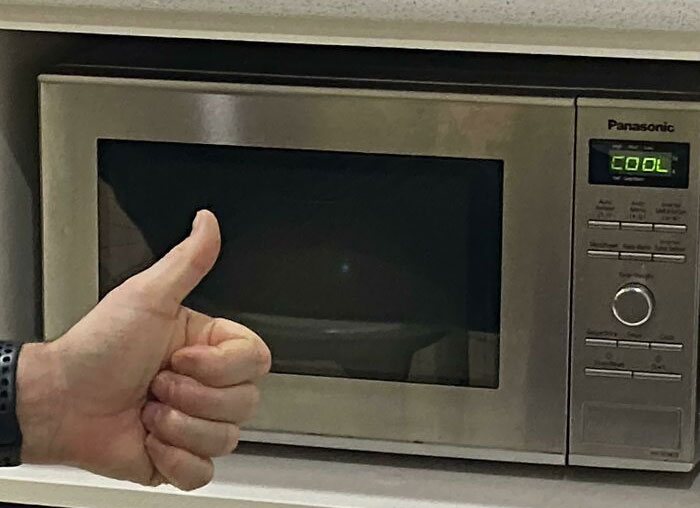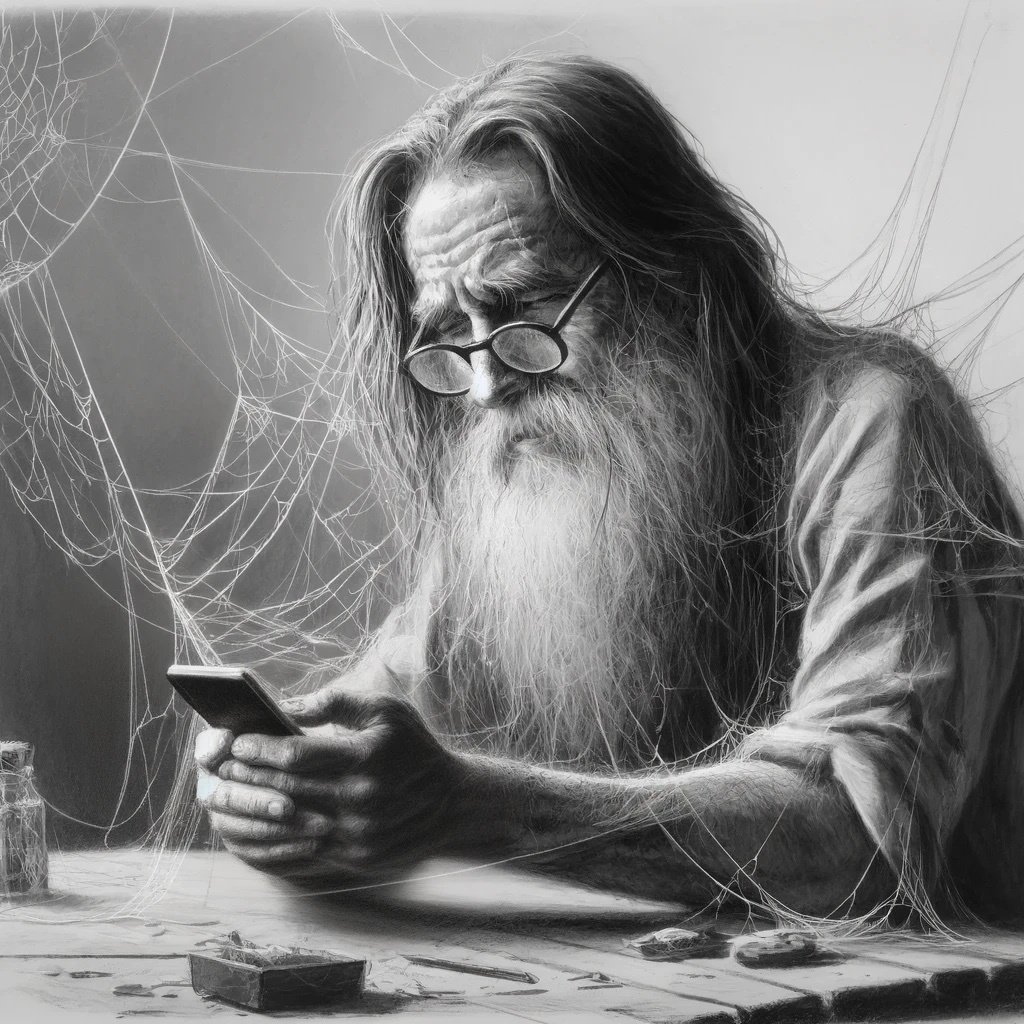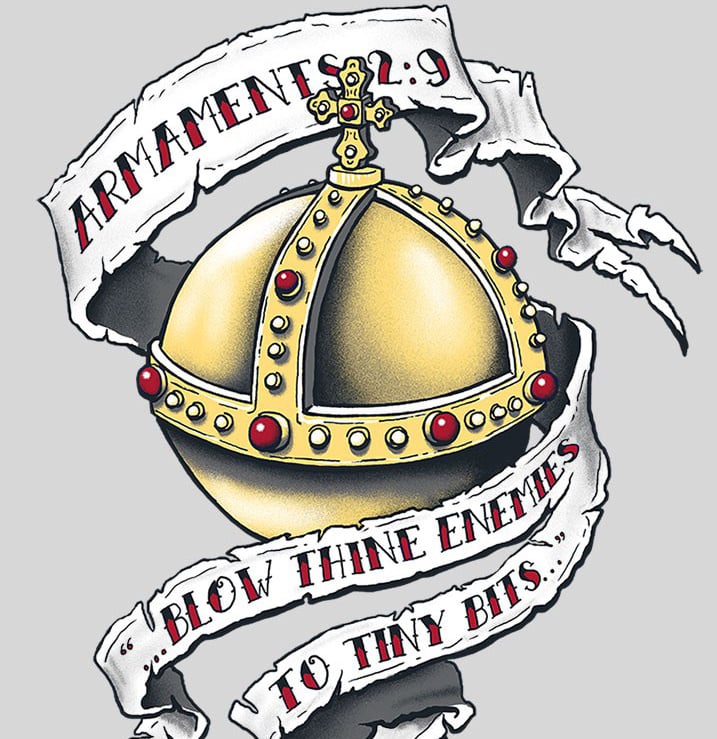I use these all the time, my kids say “just tell me what time it is.”
I did the same thing with my parents, mostly because they’d just say “quarter after” but would never say any number. If you made a word cloud of everything I’ve ever said in my life, “after what” would be gigantic in the center with every other word tiny around the edges.
This just triggered a deep memory from within me. My brother used to say “half past” when I asked him the time, and when I would say “half past what?” the response was always “Half past the monkeys ass, a quarter to his balls”
I still don’t know what it means or where it came from, but when I was 8 years old, it was hilarious.
Even worse than that imo is ‘quarter of’. I swear to god it’s been used to mean both before or after whatever hour they’re talking about
mfrs think I know what hours its close to when I probably don’t know the day and am lucky to know what month it is.
Anyone using “quarter of” to mean X:15 is just incorrect. That’s “quarter after”.
When you say quarter of, you are supposed to say the next hour. Quarter after 4 is a quarter of 5.
That’s… I guess that makes sense but that’s really weird and ambiguous.
Quarter after four is 4:15.
Quarter of five is 4:45. Also quarter to five and quarter til five.
I’m seeing other comments that suggest I might be wrong. Especially in regards to other languages.
EVERY TIME
You’re failing at your most important job.
Old man yelling at clouds checking in. I understand the prevalence of digital, but still can’t wrap my head around younger people not understanding how to read an analog clock.
Of course the kids don’t know how to read them. Kids rarely encounter analog clocks and when they do, they have several digital clocks within arms length. Most people wouldn’t reach for a slide rule when they have a calculator.
And to be fair, analog clocks are objectively worse than digital clocks in every way aside from aesthetics.
I grew up around both, for simply telling time, digital is far better. Analog though to me gives a better sense of the passage of time I guess you could call it? Like, you can see the hour hand has moved a distance after a little while; or if I want to do something for half an hour, I just have to watch for when the minute hand is pointing 180 degrees away from where it was when I started, things like that.
My kid has analog clocks on her school tests and homework as questions. They are teaching them to read them, most just don’t care for the reasons you stated.
as someone with adhd I much prefer analogue clocks, they allow me to see time through physical distance of the clock hands which helps with perceiving it, numbers don’t do that for me
When I was in elementary school, my teacher asked us which kind of clock is easier to read. I said “digital, because it shows the numbers”. She told me “no, analog is easier to read, because you just look at it and know the time without reading the numbers”.
I thought that was stupid back then, and it’s still stupid now, because I have to calculate the time whenever I need to read an analog clock. Still can’t read them quickly.
As someone who now prefers digital, but grew up with mostly analog, I think I can understand what your teacher was trying to say, and it’s really a difference in how the brain is interpreting time itself.
When your internal mental state of time is represented in numbers, then analog clocks feel awkward and clunky, because to use them you have to look at the clock, think “okay the big hand is here, the little hand is there, so that’s 7:45. School starts at 8, so 15 mins to school”. It’s like having to translate through a foreign language and then back to your own.
For people who use analog clocks almost exclusively, as I did in childhood, then your concept of time actually begins to become directly correlated to the position of the hands themselves. Not the numbers the hands are pointing at, but the shape the hands make on the clock face. I think what your elementary teacher was trying to say is that the clock itself becomes a direct physical representation of the ‘size’ of time.
Someone whose brain is working like that looks at an analog clock and immediately thinks “It’s quarter to school” - without any numbers being involved at all. In fact you could completely remove all numbers and markings from the clock face, and the physical comprehension of time would still function equally as well for that person.
So yeah, I understand why analog is bad for people who don’t like it, but I think I see the appeal for people who do.
If your mental model of time is based on analog clocks, then when looking at a digital clock you have to translate it back to clock hands to know what it means, and that’s slower than immediately seeing the analog clock face.
Sure, but it’s stupid to tell kids “objectively, analog is easier”, especially when those kids most likely grew up with digital clocks.
Yeah, absolutely.
I tried to raise my kids with analog clocks, specifically because they’d see digital everywhere else. It didn’t work. They know how to use an analog clock but find it more natural to pull out their phone
Actually, the barbarians won. I’ve mostly given up on analog because they’re wrong too often. My digital clocks rely on power and are synched, so they’re either correct or off. My analog clocks are battery and don’t synch with anything so it might be wrong and it might not be obvious. (While I’ve looked into analog clocks that synch with something, they generally fail the “looks nice” part)
KDE for years had a clock option called “fuzzy clock” where you could set the granularity of time, either in 5, 10, 15, 20, 30, or 60 minute resolution. So it would just say “five to six” or whatever in words. It was designed to keep you from clock watching while working. Not sure if it exists anymore :)
I like how it sometimes if you set the fuzziness to max it says just “lunch” or I think “second breakfast”
I went to public school in the 80s and every classroom had a very large analog clock on the wall. Even back then, it mildly annoyed me when teachers and other adults would say “half past” and so on. It always sounded archaic to my ears, even 40+ years ago.
I also get annoyed when people say “two thousand and twenty-four” for the year. Just say “twenty twenty-four”. We didn’t say “one thousand nine-hundred and eighty-four” back in the day, we said “nineteen eighty-four”.
There was a solid decade where the pattern broke, and so e people didn’t get back into it.
Two thousand, two thousand one etc don’t really work as “twenty oh-one”, etc.
deleted by creator
Calling them “the aughts” is also the best way I’ve found to refer to that decade
And stay offa mah lawn!
This is literally the first time I’ve ever heard the term “analog clock”.
Also, the title of the book (and film) is not 1984. It’s Nineteen Eighty-Four.
But I’m not a boomer, I’m genx, so whatever. I’m outta heeeere… 😎
one thousand nine hundred and eighty-four
What else would you call an analog clock?
A clock
deleted by creator
Nowadays is easier just to say the precise time down to the minute.
I still round, I’ll call 3:11 3:10 when the precision doesn’t matter.
In a way it is a bit sad though. It gives a more rigid feeling to things. “about quarter past” would usually be something between :10 and :20. There is room for interpretation and time feels more available with less demanded precision.
On the other hand, quarter inch and half mile and such are meant to be precise?
They are? I wouldn’t talk about fractions of cm or km if I wanted to be precise, I would say 2,5 mm or 500 m. Half a km is approximate, for when accuracy isn’t that relevant.
Yeah, imperial units are terrible. 1/3 cup nuts, 1/2 cup flour…
More granular units exist, but they’re not easier to use and so no one does. The only reason anyone would refuse to switch to metric is because “it’s always been done that way around here”
Edit: typo
Why would the use of analog or digital clocks affect that? Quarter is 1/4th of an hour = 15 minutes. I don’t see the correlation and I can’t confirm it from personal experience either.
I think it’s because, visually, 3:15 puts the minute hand a quarter of the way around the clock face. Digital clocks don’t have a corresponding visual.
The way information is presented impacts how it is stored. If you look at a clock face and want to know what time it is it’s very easy to visualize the passage of time as fractional because the time is presented to you without numbers being the primary focus and instead divisions. Mentally it is easier for you then to grapple with time as a fractional division. However, if instead of presenting the day as being divides into 2 portions of 12 hours, themselves divided into 12 subdivisions, those then further divided into 12 subdivisions of the 5tha of those divisions, you presented it as a simple read out the passage of time feels more like a linear stream mostly indistinguishable.
How we present time changes how we think about time, which then changes how we describe time.
Man language is cool…
what do you know about Marshall McLuhan? I’m hoping it’s not very much, because you seem to be in a really good place to receive what he has to teach right now. Google the phrase “the medium is the message” if you’d like to know more.
I think it’s a rounding thing. Looking at an analog clock, you’ll see at a glance that the hand is about halfway around the circle but it takes an additional processing step to determine whether it’s 6:31 or 6:29. Looking at a digital clock, you’ll see that it’s 6:29 first and then it takes another step of processing to determine that 29 minutes is roughly halfway through the hour.
Laughs in Austrian.
The convention for (15-minute) fractional hours is to name the fraction of the time from the previous hour to the next one.
eg:
3:15 -> “viertel vier” = “quarter four”
3:30 -> “halb vier” (“hoiba viere” in dialekt) = “half four”
3:45 -> “dreiviertel vier” = “three quarters four”In Finland we use:
3:15 viisitoista yli kolme = fifteen over three.
3:30 puoli neljä = half four.
3:45 viisitoista vaille neljä = fifteen short of four.We also use 24 hour clocks but if the dinner is at 17:30, it will just be said to be at half six and you figure am/pm out of context - if it’s ambiguous, we say “six in the morning / six in the evening”.
In English, when they ask the time, we reply: Puolivälissä ohitti apinan perse. Because in English Puolivälissä rhymes with perse.
I was thinking the other day that I never hear the phrase “bottom of the hour” (meaning __:30) anymore.
Not in Norway lol. If you want to meet up at 11:20 you say “ti på halv tolv” meaning "ten minutes before half hour before twelve.
Yeah, it took me a while to wrap my head around it too.A quarter to 1400 does sound a bit odd.
[deleted]
That doesn’t make sense to me. It would be a quarter to 14 if you wanted to say 14 instead of 2.
I wrote that it sounds odd, which it does. I used to work a job that used military time. Almost everyone wore a digital watch but many of the offices had analog clocks. If I was looking at an analog clock I’d say 'quarter to 2" but if I looked at my watch or the screen I’d probably say 1345.
I generally avoided use of the quarter/half shorthand because people often say it with no context.
“What time is it?”
“Half past.”
Half past what? Sort of an assumption that the asker has a clue what hour it is, but if they knew, why would they ask the time?
I’m not sad to see the phrases go.
Never actually heard anyone exclude the hour, it’s always “half past 3”, “quarter to 8”, “5 till 6”, etc
That’s why people usually say Half past 5, in my experience anyway.
My childhood was filled with people doing that. It drove me nuts.
I rarely even bother using 12 hour time any more.
My internal clock runs on a circle… So if I am guessing or saying roughly the time I will use “quarter to”, “ten past”, etc. If it’s an exact time I will say it to the minute, 6:43 etc.
I don’t get why, it’s not like they aren’t learning fractions these days right?
Because it’s easier to use 5:15 or 5:30 when you get a digital readout. No one’s counting every individual tick on an analog clock, so fractions make more sense in that case.


















